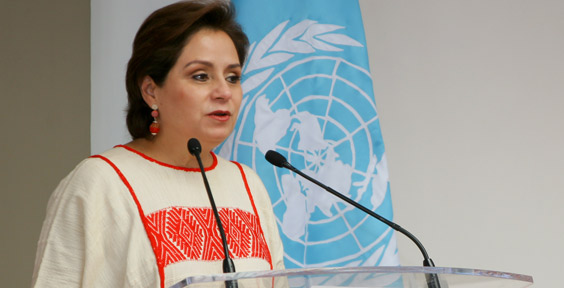The Secretariat of the United Nations Framework Convention on Climate Change (UNFCCC) or the UN Climate Change on Wednesday, April 1, 2020 commenced operation according to a new structure, as part of an organisational change initiative.

This informed the overhaul of the secretariat as the UN lead entity supporting the intergovernmental Climate Change process and to mobilise Climate Action towards global transformation to meet the targets of the Paris Agreement in an effective, efficient manner.
Patricia Espinosa, Executive Secretary of UN Climate Change, said: “The initiative is part of the secretariat’s efforts to increase its effectiveness, adaptability and synergetic delivery of support to Parties as they move forward in implementing the Convention, the Kyoto Protocol and the Paris Agreement, thereby ensuring better lives and livelihoods for this and future generations.”
“Strengthening the secretariat’s capacity to support the climate change process through the revitalisation of UNFCCC structure and its programme and management processes to be fit-for-purpose as we move into the future is all the more critical given the urgency for the Parties and the global community at large to raise the level of climate ambition,” she added.
Over a period of 18 months, the secretariat reportedly undertook a thorough review of its organisational structure, operations and use of resources, in order to understand how it can best support the needs of Parties and non-Party stakeholders in the global transformation to achieve the objectives of the Paris Agreement.
As a result of this review, the secretariat initiated an organisational change exercise – including both structural and non-structural changes – designed to ensure a “fit-for-purpose secretariat” with a collaborative and results-driven culture as the world moves into the future.
The structure, it was gathered, is designed to better deliver on mandates, to be more agile in responding to changing realities to strengthen effective engagement and relationships with diverse stakeholders.
Hence, the UN Climate Change Secretariat will start using new names for divisions, subdivisions, units and teams which reflect the new structure.
For instance, four divisions and subdivisions are directly linked with the flagship “Executive”. These include “Operations”, “Programmes”, “Communication and Engagement”, and “Intergovernmental Support and Collective Progress”.
While “Legal Affairs”, “Conference Affairs” and “AS/HR/ICT” are under “Operations”, “Programmes” comprises “Mitigation”, “Adaptation”, “Transparency” and “Means of Implementation”.
According to the UNFCCC, the intergovernmental engagement will be focused on providing ongoing operational oversight to the established processes and bodies, which in turn will be focused on delivering in full as guided.
The secretariat, in support of Parties, presiding officers and the elected chairs/co-chairs of the bodies, provides a critical link in ensuring the effective coordination of this effort, it adds.
“The data, information and knowledge generated through the established processes and bodies will be used to inform future action and to foster deeper and broader engagement with relevant actors, whose expertise and experience can be used to enhance all the established processes and bodies.”
The UN body disclosed that the new structure is aligned to the Programme Budget for the biennium 2020-2021 that was approved by Parties at the UN Climate Change COP25 in Madrid in December 2019.
